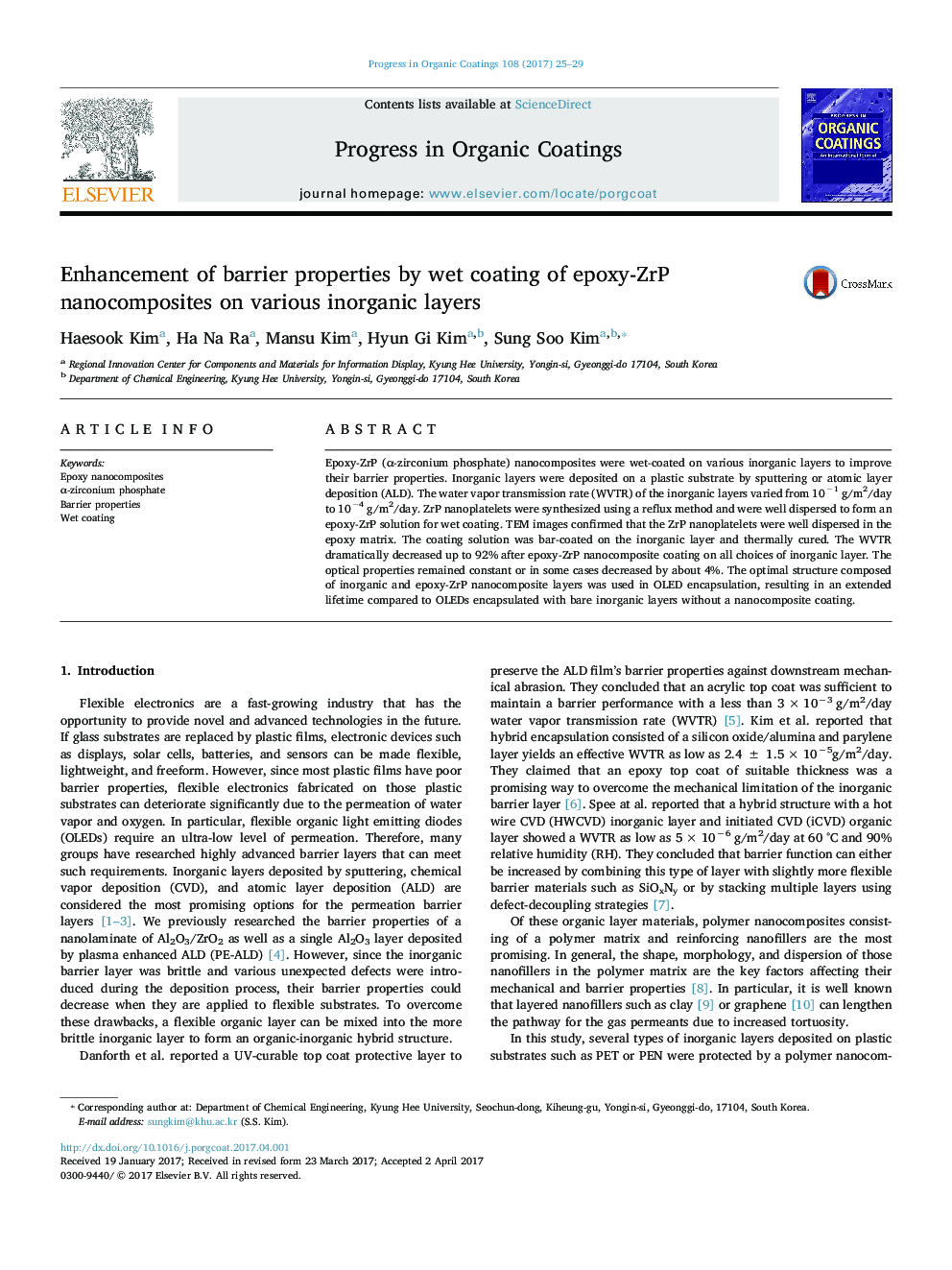| Article ID | Journal | Published Year | Pages | File Type |
|---|---|---|---|---|
| 4999332 | Progress in Organic Coatings | 2017 | 5 Pages |
Abstract
Epoxy-ZrP (α-zirconium phosphate) nanocomposites were wet-coated on various inorganic layers to improve their barrier properties. Inorganic layers were deposited on a plastic substrate by sputtering or atomic layer deposition (ALD). The water vapor transmission rate (WVTR) of the inorganic layers varied from 10â1 g/m2/day to 10â4 g/m2/day. ZrP nanoplatelets were synthesized using a reflux method and were well dispersed to form an epoxy-ZrP solution for wet coating. TEM images confirmed that the ZrP nanoplatelets were well dispersed in the epoxy matrix. The coating solution was bar-coated on the inorganic layer and thermally cured. The WVTR dramatically decreased up to 92% after epoxy-ZrP nanocomposite coating on all choices of inorganic layer. The optical properties remained constant or in some cases decreased by about 4%. The optimal structure composed of inorganic and epoxy-ZrP nanocomposite layers was used in OLED encapsulation, resulting in an extended lifetime compared to OLEDs encapsulated with bare inorganic layers without a nanocomposite coating.
Related Topics
Physical Sciences and Engineering
Chemical Engineering
Process Chemistry and Technology
Authors
Haesook Kim, Ha Na Ra, Mansu Kim, Hyun Gi Kim, Sung Soo Kim,
